Preparation and characterisation of PHT-loaded chitosan lecithin nanoparticles for intranasal drug delivery to the brain
- PMID: 35520085
- PMCID: PMC9055806
- DOI: 10.1039/d0ra04890a
Preparation and characterisation of PHT-loaded chitosan lecithin nanoparticles for intranasal drug delivery to the brain
Abstract
The use of nanoparticles (NPs) for intranasal (IN) drug delivery to the brain represents a hopeful strategy to enhance brain targeting of anti-epileptic drugs. In the present work, chitosan-lecithin NPs loaded with phenytoin (PHT), were prepared using the nano-precipitation method. The spherical nature of the NPs and their stability were confirmed using scanning and transmission electron microscopy, while the average dynamic size and zeta potential were measured using dynamic light scattering. The encapsulation efficiency of PHT was higher than 60% for all prepared NPs. Release studies showed that the amount of released PHT was directly related to the amount of chitosan used. The optimum preparation, L10Ci + was administered via the IN route, and the levels of PHT in the brain were measured in three-time points. Two experimental controls were given via the intraperitoneal (IP) and IN routes. The highest PHT amount reaching 1.01 ± 0.55% for L10Ci +, which was associated with a sustained release of PHT. These preliminary findings show that the IN delivery of PHT-loaded NPs is very promising for managing epilepsy. The direct nose-to-brain approach increases the safety margins of PHT, while the sustained release could improve patient compliance in a clinical setting.
This journal is © The Royal Society of Chemistry.
Conflict of interest statement
There are no conflicts to declare.
Figures

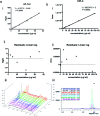
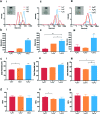
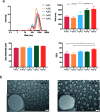
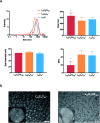
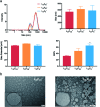
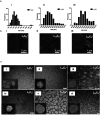
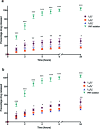

Similar articles
-
Intranasal delivery of phenytoin-loaded nanoparticles to the brain suppresses pentylenetetrazol-induced generalized tonic clonic seizures in an epilepsy mouse model.Biomater Sci. 2021 Nov 9;9(22):7547-7564. doi: 10.1039/d1bm01251g. Biomater Sci. 2021. PMID: 34652351
-
Intranasal delivery of phenytoin loaded layered double hydroxide nanoparticles improves therapeutic effect on epileptic seizures.J Nanobiotechnology. 2024 Apr 2;22(1):144. doi: 10.1186/s12951-024-02405-8. J Nanobiotechnology. 2024. PMID: 38566094 Free PMC article.
-
Phenytoin-loaded bioactive nanoparticles for the treatment of diabetic pressure ulcers: formulation and in vitro/in vivo evaluation.Drug Deliv Transl Res. 2022 Dec;12(12):2936-2949. doi: 10.1007/s13346-022-01156-z. Epub 2022 Apr 11. Drug Deliv Transl Res. 2022. PMID: 35403947 Free PMC article.
-
Intranasal delivery of tapentadol hydrochloride-loaded chitosan nanoparticles: formulation, characterisation and its in vivo evaluation.J Microencapsul. 2017 Nov;34(7):644-658. doi: 10.1080/02652048.2017.1375038. Epub 2017 Sep 18. J Microencapsul. 2017. PMID: 28862072
-
Intranasal delivery of Huperzine A to the brain using lactoferrin-conjugated N-trimethylated chitosan surface-modified PLGA nanoparticles for treatment of Alzheimer's disease.Int J Nanomedicine. 2018 Feb 1;13:705-718. doi: 10.2147/IJN.S151474. eCollection 2018. Int J Nanomedicine. 2018. PMID: 29440896 Free PMC article.
Cited by
-
Innovative Microencapsulation of Polymyxin B for Enhanced Antimicrobial Efficacy via Coated Spray Drying.Mol Pharm. 2025 Jan 6;22(1):113-130. doi: 10.1021/acs.molpharmaceut.4c00594. Epub 2024 Oct 8. Mol Pharm. 2025. PMID: 39378315 Free PMC article.
-
Antiepileptic drug-loaded and multifunctional iron oxide@silica@gelatin nanoparticles for acid-triggered drug delivery.Sci Rep. 2024 May 18;14(1):11400. doi: 10.1038/s41598-024-62248-z. Sci Rep. 2024. PMID: 38762571 Free PMC article.
-
Convenient conversion of hazardous nitrobenzene derivatives to aniline analogues by Ag nanoparticles, stabilized on a naturally magnetic pumice/chitosan substrate.RSC Adv. 2020 Dec 8;10(71):43670-43681. doi: 10.1039/d0ra08376c. eCollection 2020 Nov 27. RSC Adv. 2020. PMID: 35519713 Free PMC article.
-
A Comprehensive Study on Nanoparticle Drug Delivery to the Brain: Application of Machine Learning Techniques.Mol Pharm. 2024 Jan 1;21(1):333-345. doi: 10.1021/acs.molpharmaceut.3c00880. Epub 2023 Dec 7. Mol Pharm. 2024. PMID: 38060692 Free PMC article.
-
Chitosan Nanoparticles at the Biological Interface: Implications for Drug Delivery.Pharmaceutics. 2021 Oct 14;13(10):1686. doi: 10.3390/pharmaceutics13101686. Pharmaceutics. 2021. PMID: 34683979 Free PMC article. Review.
References
-
- Nordli D. R., Focal and Multifocal Seizures, Swaiman's Pediatric Neurology, Elsevier, 2017, pp. 531–537
LinkOut - more resources
Full Text Sources

